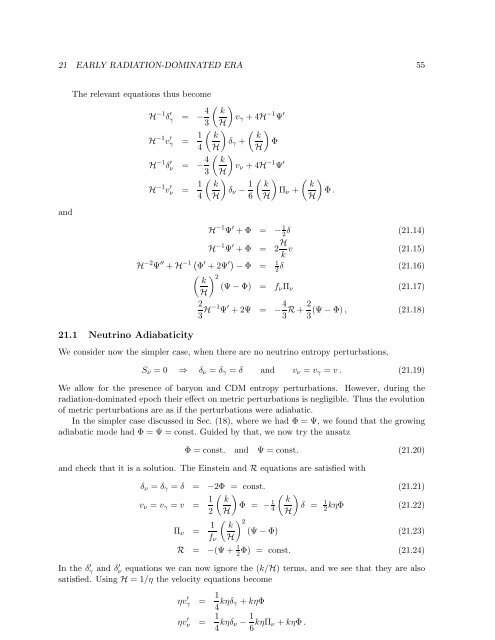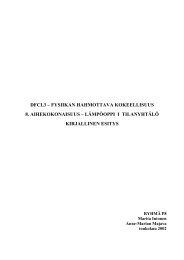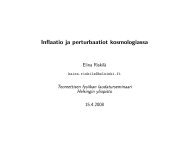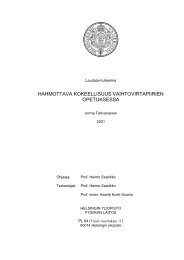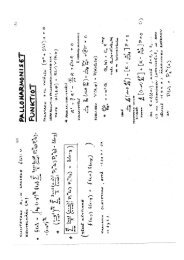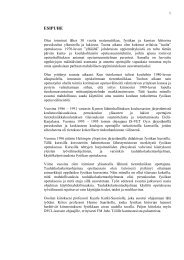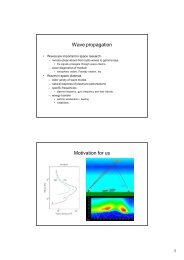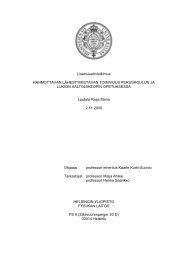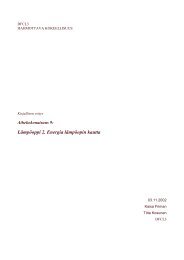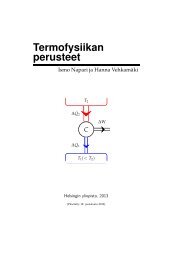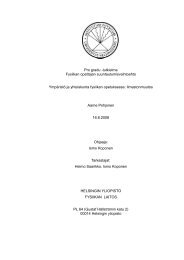Cosmological Perturbation Theory, 26.4.2011 version
Cosmological Perturbation Theory, 26.4.2011 version
Cosmological Perturbation Theory, 26.4.2011 version
Create successful ePaper yourself
Turn your PDF publications into a flip-book with our unique Google optimized e-Paper software.
21 EARLY RADIATION-DOMINATED ERA 55andThe relevant equations thus becomeH −1 δ γ ′ = − 4 ( kv γ + 4H3 H)−1 Ψ ′H −1 v γ ′ = 1 ( ( k kδ γ + Φ4 H)H)H −1 δ ν ′ = − 4 ( kv ν + 4H3 H)−1 Ψ ′H −1 v ν ′ = 1 ( kδ ν −4 H)1 ( ( k kΠ ν + Φ .6 H)H)H −1 Ψ ′ + Φ = − 1 2 δ (21.14)H −1 Ψ ′ + Φ = 2 H k v (21.15)H −2 Ψ ′′ + H −1 ( Φ ′ + 2Ψ ′) − Φ = 1 2( ) δ (21.16)k 2(Ψ − Φ) = f ν Π ν (21.17)H21.1 Neutrino Adiabaticity23 H−1 Ψ ′ + 2Ψ = − 4 3 R + 2 (Ψ − Φ), (21.18)3We consider now the simpler case, when there are no neutrino entropy perturbations,S ν = 0 ⇒ δ ν = δ γ = δ and v ν = v γ = v . (21.19)We allow for the presence of baryon and CDM entropy perturbations. However, during theradiation-dominated epoch their effect on metric perturbations is negligible. Thus the evolutionof metric perturbations are as if the perturbations were adiabatic.In the simpler case discussed in Sec. (18), where we had Φ = Ψ, we found that the growingadiabatic mode had Φ = Ψ = const. Guided by that, we now try the ansatzΦ = const. and Ψ = const. (21.20)and check that it is a solution. The Einstein and R equations are satisfied withδ ν = δ γ = δ = −2Φ = const. (21.21)v ν = v γ = v = 1 ( ( k kΦ = −2 H)1 4δ =H)1 2kηΦ (21.22)Π ν = 1 f ν( kH) 2(Ψ − Φ) (21.23)R = −(Ψ + 1 2Φ) = const. (21.24)In the δ ′ γ and δ ′ ν equations we can now ignore the (k/H) terms, and we see that they are alsosatisfied. Using H = 1/η the velocity equations becomeηv ′ γ = 1 4 kηδ γ + kηΦηv ′ ν = 1 4 kηδ ν − 1 6 kηΠ ν + kηΦ .


